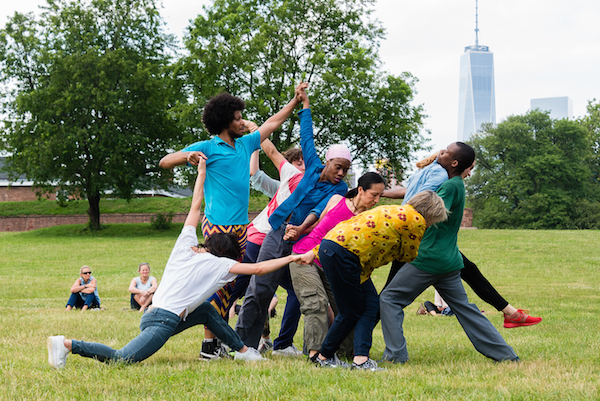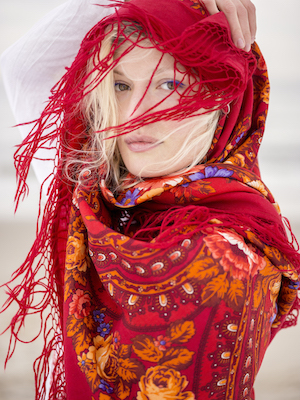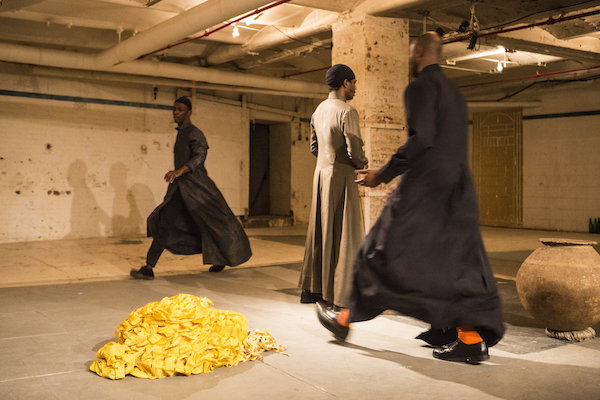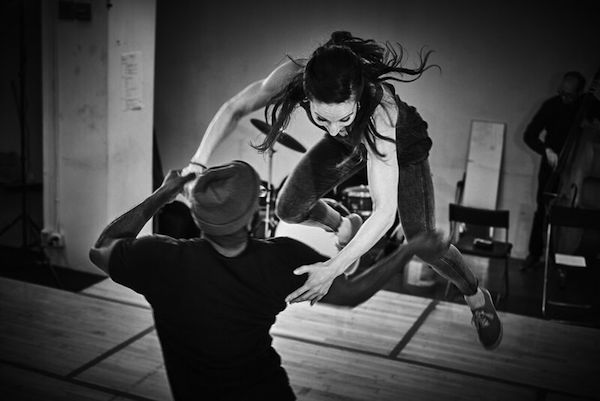
BY SEAN EGAN | It’s time once again — the 15th time, in fact — for New Yorkers to take in boundary-pushing creative work against the backdrop of Downtown’s waterfront.
Run by the Lower Manhattan Cultural Council (LMCC), June 16–26’s River To River Festival presents free music, art, theater, and dance in unique venues (as well as outdoor spaces) below Chambers St. This year’s highlights include: Jillian Peña’s Foucault-inspired dance piece “Panopticon;” “M is Black Enough,” a Poets House-sponsored evening of music and spoken word; and Saya Woolfalk’s festival-spanning, multi-disciplinary work “ChimaTEK: ChimaCloud Control Center.”
Earlier this week, we spoke with some of the artists whose work is amongst the most promising to be presented during the fest. Read on about these events, and visit rivertorivernyc.com for the full schedule.
MUSIC: OLGA BELL’S “KRAI” | This live performance of Olga Bell’s critically acclaimed 2014 album “Krai” was actually supposed to be one of the highlights of last year’s festival, but wound up getting cancelled due to inclement weather. While currently on tour in Europe to promote her new record, “Tempo,” Bell is making the time to return to River To River, for a belated rain date.

“It’s difficult to perform this record, to really take it on an extensive tour or anything, because to play it the way that it was written requires six people singing and six people playing instruments,” Bell said. “So every performance of ‘Krai’ is really special, and it’s sort of an honor to have the resources to put it on.”
Described by Bell as “a smorgasbord of folk styles from across Russia” that’s then “presented alongside electronic and pop structures,” the song cycle will be brought to life by musicians — including guitarist and Son Lux collaborator Rafiq Bhatia, and Aaron Arntz (who toured with bands Grizzly Bear and Beirut). In addition, the June 22 performance’s venue of the plaza at 28 Liberty holds a special significance to Bell.
“I’m excited to play the piece outdoors; I’ve never done that before. A lot of ‘Krai’ is sort of a love song to the natural world, of these nine regions in Russia, so that will be cool,” she commented, describing how she explored those places via Google Maps and researched their folk traditions in preparation for the album. “And the fact that the concert is free and open to the public is awesome, because there’s literally no barrier to entry.”
THEATER: KANEZA SCHAAL’S “GO FORTH” | Another pre-existing work being built upon in its River To River iteration is “GO FORTH,” Kaneza Schaal’s performance piece, inspired by the Egyptian Book of the Dead, which functions as a translation of seven of the text’s chapters (June 18, 19 & 25).

“The piece grew out of my thinking about mourning rituals and how we make space for the presence of the absent in our lives,” explained Schaal, who began this line of thinking after suffering the loss of her father and considering the “ritualized grieving process” she experienced. By all accounts, the resulting meditation on loss, grief, and rituals has been as affecting as it is hard to classify.
“We’re trying to pull on as many different languages of performance as we can,” Schaal noted, adding that the production features elements as disparate as dance and 16mm film. “There is text, and movement, and we worked with designer/fine artist Christopher Myers.”
The result of this collaboration with Myers — a photo exhibit inspired by tomb paintings the pair saw in Egypt — is a new addition for River To River. Like Bell, Schaal has nothing but praise for the LMCC and the fest, noting that the wide net it casts and its accessibility helps bring in audience members that may not otherwise attend.
“I set out for the piece in my own process of losing a loved one, and it was very gratifying to have audience members find that work useful for them individually,” Schaal said. “I hope that audience members get to consider how we individually and collectively process death.”
DANCE: EPHRAT ASHERIE’S “RIFF THIS, RIFF THAT”
One exciting premiere is the result of a collaboration a lifetime in the making: Ephrat Asherie’s dance piece “Riff this, Riff that” (June 20 & 21), which is the result of working with her brother Ehud, a jazz pianist. While Asherie is known primarily as a hip-hop, house, and break-dancer, this new work — featuring an ensemble of six dancers and a quartet of musicians — focuses on jazz.

“I’ve been looking at the authentic jazz dance roots of these dances,” she said, noting the similarities between the “buoyancy and joyfulness and exuberance” of music and dance of the 1920s/30s/40s, and her modern day style. “That is really at the root of all of these contemporary, street, and club styles that I do.”
The piece features newly arranged jazz standards, and highlights the talents of individual dancers. “You get to see how all of those elements and each of those voices kind of can play off each other in a more formalized, choreographed vignette,” Asherie noted, while ensuring that — fitting for its focus — there will be a “precise balance between choreography and improvisation” in the work.
Ultimately, the piece functions as a lesson about New York, with Asherie hoping that the connections drawn between past and present highlight the city’s progressive history regarding dance, community, and connection.
“I feel very strongly like this kind of piece is something that represents very much ‘Only in New York.’ Like, ‘Oh yes, this is what this place is about.’ ”

















